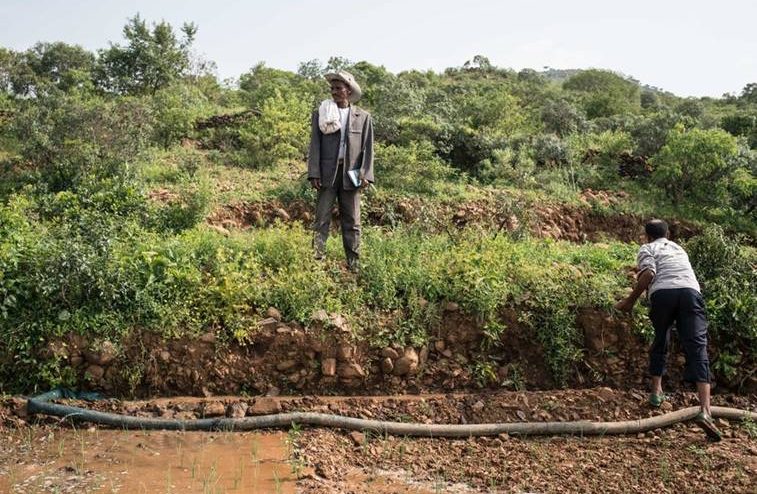
A restored watershed and agricultural training have revitalised life for a rural community in Tigray, northern Ethiopia
“These lands, including the hills you see, were dry and barren with little or no vegetation on them”, recollects Priest Gebregzibher Gebremeskel, looking over the lush fields of his lifelong home, Betegebez kebele, in the Tigray mountains in northern Ethiopia.
“Some farmers tried to grow crops, but the land did not yield enough to sustain the lives of the farmers and their families. People here, including my parents, lived in extreme poverty. There was little or nothing to eat and most farmers migrated to other places,” he continued.
Today it’s a different story for Priest Gebregzibher, who now grows a variety of nutritious vegetables, including maize, tomatoes, cabbages and spinach, as well as mangoes, avocadoes and papayas: fruits that he said “nobody had ever thought of growing here before.”
Priest Gebregzibher is one of more than 6,000 people in Tigray’s Ahferom woreda whose food security and earning potential have benefited from support from Farm Africa, an NGO specialising in growing agriculture, protecting the environment and developing businesses in eastern Africa. His story is featured in a new series of publications (see links below) published by Farm Africa to share the lessons learnt from over 25 years of working in Tigray, and documenting the achievements.
With support from Irish Aid and the UK Department for International Development, Farm Africa helped the community come together to restore their watershed, improve their nutrition and boost their incomes by growing fruits and vegetables, rearing goat and sheep, producing and marketing honey, and rearing poultry.
Over this timeframe, 949 hectares of land have been placed under integrated watershed management, of which 254 hectares of land are restored and 120 are now irrigated; more than 3,500 households (and counting) are part of a revolving livestock fund that granted three pregnant goats or sheep to women in need under the proviso they passed on three of the female offspring to another woman in need; 540 households received support in beekeeping; and 1,321 households received a package of support for poultry production.
The project activities were all designed to mutually reinforce each other, so that poor households could see the benefit from their environmental management efforts in their pockets and daily lives. Most importantly, increased availability of water that resulted from watershed management intervention such as the construction of hillside terraces, check dams, bunds and gabions, was the cornerstone of work to boost agricultural production.
As the valley became visibly greener and wild flowers bloomed, nectar became available for bees to thrive on. The bees pollinated plants that fed livestock. And there was water available to irrigate newly planted fruit trees.
“The situation began to change as the watershed management work intensified,” remembers Gebregzibher. “Soil erosion decreased, and forest coverage and the fertility of the soil increased. Farmers started exploiting the improved situation by using irrigation to grow mostly vegetables. Gullies became farm lands.”
Land in Tigray’s rugged mountains is scarce, and many farm sizes are very small. For many, it’s a constant challenge to produce enough to feed their families. As Farm Africa withdraws from Ahferom woreda after a quarter of a century, there is optimism in the community that they now have the lasting knowledge and skills to bolster their food security and incomes through farming and rearing livestock.